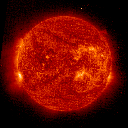When the sun comes out at Sandy
 Yesterday it happened, and again today. After several days of overcast weather and showers, the clouds roll back, the sun comes out, the temperature shoots up and things change again. It's lunchtime, about 26 degrees and 79% humidity, with just a puff or air from the north. Big butterflies cruising the garden, the grapevine reaching its tendrils further into the fragipanni.
Yesterday it happened, and again today. After several days of overcast weather and showers, the clouds roll back, the sun comes out, the temperature shoots up and things change again. It's lunchtime, about 26 degrees and 79% humidity, with just a puff or air from the north. Big butterflies cruising the garden, the grapevine reaching its tendrils further into the fragipanni.Outside my door on the soggy path the big mango leaves and frangipanni flowers need raking so I don't slip on them and sprain my navel.
Yesterday, behind the beach the ants in the timber rails massed for take-off in anticipation of the stormy wind which never really came. All the boys in their winged finery looking to score that evening. I wonder how they got on. But the little ant hills on the grassy area before the beach showed no such signs of activity. I wonder why this is so.
And yesterday the galahs (Cacatua roseicapilla) ate seeds in the trees while the Crested pigeons (Ocyphaps lophotes) grazed beneath them on the grass seeds.
On the beach are the watercourses of small rivulets that formed in the rain and are left behind like aerial views of the world's great river deltas. And like the deltas, they have occurred on relatively flat land, forming wadis rather than canyons. They run west-east along the sand to the ocean, fairly subtly as they are not deep because the rain wasn't particularly heavy and the fall of the land is slight. They cross over shallow, wide, north-south ridges that are left on the sand by the retreating tide. I keep coming back to the beauty of the sand, because it really is spectacular and changes daily.
I watched some Ghost crabs (Ocypode cordimana) emerging from their occasional burrows on the west side of a sand dune. They live well above the sand flats occupied in their many thousands by their Soldier crab cousins, and would hate the twice-daily drenching their cousins receive with the tides. They even make their nests as far as the grassed area, and I've had one knock at my door. We must talk more about the translucent Ocypode cordimana another time.
I like the way that when the sun comes out after the rain, you can hear it. Seems like the birds and insects like it as much as your almanackist does.



















0 Comments:
Post a Comment
<< Home